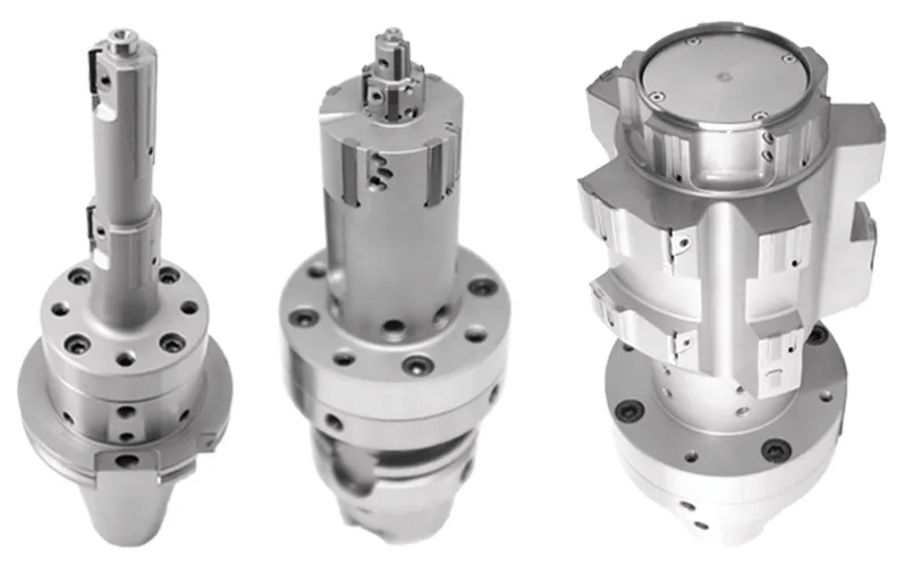Boring Bars

Boring Bars : Boring bars types and
accessories
In the intricate realm of precision
engineering and advanced manufacturing, the quest for tools that can navigate
the complexities of internal machining operations with finesse and accuracy is
paramount. Boring bars, in their various configurations and designs, stand as
stalwarts in this endeavor, facilitating the creation of precise bores and
internal features with unparalleled efficiency. This article delves into the
intricacies of boring bars, elucidating their design, applications, and
transformative impact on the world of precision machining.
1.
Introducing the Boring Bar
A boring bar is a cutting tool typically
used in conjunction with a lathe or machining center to enlarge or refine
existing holes or bores. Characterized by its slender profile and unique
geometry, a boring bar enables access to internal features, ensuring precision
and accuracy in machining operations.
2. VMC
Boring Bar: Bridging Versatility and Precision
In the context of Vertical Machining Centers (VMCs), a VMC boring bar
emerges as a specialized tool tailored for vertical machining applications. By
leveraging the capabilities of a VMC, these boring bars facilitate:
● Enhanced Flexibility: Adaptable to a
diverse range of machining scenarios, from simple bores to intricate internal
profiles.
● Optimized Performance: Ensuring consistent
and repeatable results across various materials and geometries.
3. Boring Bar Tool: The Heart
of Internal Machining
A boring bar tool, with its cutting edge geometry and material
composition, serves as the linchpin of internal machining operations:
● Material Selection: Crafted from high-speed
steel, carbide, or specialized alloys, ensuring optimal performance and
longevity.
●
Geometry
Optimization: Tailored to specific applications, facilitating efficient chip
evacuation, reduced tool wear, and enhanced surface finish.
● Tool Life Enhancement: Incorporating
advanced coatings and treatments to prolong tool life and minimize maintenance.
4. Boring Bar Tool Holder:
Ensuring Stability and Precision
The synergy between a boring bar and its tool holder is pivotal in
achieving optimal machining performance:
● Rigidity: Ensuring minimal deflection and
vibration, crucial for achieving tight tolerances and surface finish
requirements.
●
Adaptability:
Accommodating a variety of boring bar designs and geometries, facilitating
seamless integration into machining setups.
● Secure Clamping: Leveraging advanced
clamping mechanisms to ensure tool retention and stability during high-speed
machining operations.
5. DCMT Boring Bar: Navigating
the Complexity of Turning Operations
The DCMT (Diamond Coated Multi-Tip) boring bar, characterized by its
diamond-coated inserts, offers a unique blend of durability and performance:
● Enhanced Wear Resistance: Diamond coatings
mitigate wear and prolong tool life, ensuring consistent performance over
extended machining cycles.
●
Superior
Surface Finish: Facilitating the production of mirror-like surface finishes,
minimizing post-processing and enhancing component quality.
● Versatility: Catering to a wide range of
materials and applications, from soft alloys to hardened steels and exotic
metals.
Conclusion
Boring
bars, with their myriad configurations and designs, epitomize the confluence of
precision engineering and advanced tooling technology. As industries continue
to push the boundaries of innovation and excellence, the role of boring bars
and their associated tool holders in facilitating intricate internal machining
operations remains unequivocal. Through their transformative impact on
machining performance, surface finish, and dimensional accuracy, boring bars
reaffirm the timeless principles of precision, efficiency, and innovation,
underscoring their indispensable role in shaping the future of manufacturing.
Customers Feedback
Apply for job
Get started for Free!
Aliquam augue suscipit, luctus neque purus ipsum neque dolor primis libero

